Marcus Ryle has been one of the Music Products industry's most successful entrepreneurs. He has earned this with clear and clever thinking, hard work, and by being both a musician and technologist. To learn more about Marcus as an innovator check out our 2013 interview with him.
He began his product design career with Oberheim Electronics in 1982 when he was discovered and then mentored by Tom Oberheim himself. To learn more about the legendary career of Tom check out our 2016 interview Part 1 and Part 2.
You've made products for so many different kinds of musicians. What music do you like to listen to?
I enjoy most kinds of music. At my age, you often end up going back to the music you grew up on. I was definitely into the progressive rock world. As a keyboard player, I'd listen to Keith Emerson all day long, and Yes, and the band UK. But also, Chick Corea and Herbie Hancock. David Sancious, his first solo album. Patrick Moraz's first solo album. Those were all just great explorations of sound.
You have had market competition on the cutting edge like modeling amplifiers and while protecting your existing product lines. How do you see competition in general?
You're talking about two kinds of competition. There's competition that really keeps you on your toes because they're innovating as well and you acknowledge: "Hey, someone else had a good idea." It's like how musicians inspire each other, right? The famous Beatles and Beach Boys stories about how the Beatles heard Pet Sounds and how Brian Wilson heard Sgt. Pepper inspires you. There's a lot of great, innovative products and companies out there and you want that to push you further.
When it comes to products that are just copies, that's another form of competition. When someone tries to make exactly what you make, my personal belief is the only real defense to that is to try and stay a step ahead. And try to build a level of quality that will garner brand loyalty, at which point you should be able to continue on.
You think about the new Oberheim OB-X8, there's lots of synth choices and lots of plugins that are great that people could buy, but no one else is going to level of detail we went to when making something that really sounds like an authentic Oberheim. If you commit yourself to that level of quality, I think you'll always find an audience. And there will always be an audience for less expensive alternatives too. I think the bottom line is always just seeing what it is that's inspiring musicians. I mean, if the products help people make music then that's the whole point.
Good segue opportunity, Oberheim was your first real job?
Yea, Oberheim was my first 40 hour a week job. I had just turned 19 and it was actually a really tough life decision. I still had aspirations of having my life as a musician and spending lots of time in the recording studio and having a more typical freeform musician type of schedule and lifestyle. I had never worked a job where you're just supposed to show up five days a week and do stuff.
Tom Oberheim told us that he first met you when you did a Synclavier demo for him...
Tom was friends with Richard Bunger who was the director of the music department at Cal State Dominguez Hills and had heard that we had a Synclavier at the school. I think there were only about a dozen or so made of that first generation of Synclavier and we were the only folks West of the Mississippi that had one. It was not something you could see every day or pop down to your music store and see. It was the first FM synthesizer, and it predates the DX7 by several years. It really seemed like the future of synthesis at the time. It had 16 voices, no velocity, and it was just two Operators. You had the single Modulator and Carrier per voice. But unlike the DX7, you weren't just doing sine waves. You could do additive synthesis. It would calculate wave tables for the modulator or the carrier. You could control how much of each harmonic you wanted per operator so that you could create more complex wave forms, or certainly different wave forms than the Yamaha FM approach.
When you showed Tom the Synclavier did you already know him by reputation?
Sure, Sequential and Oberheim were king of the hill. I remember when I first saw an Oberheim 8-voice, it was at West LA Music. And I'd first seen the Prophet-5 when David Smith introduced it at the NAMM show in 1978. That was all unobtainium for a kid like me. At that time, my main synthesizer was the ARP 2600 that I bought used when I was 15 or so, and I could just never imagine being able to afford a polyphonic synth, so I asked Tom, "Well, if I work at Oberheim, could I have an OB-X?" And he said, "Yea, we could lend you one. You could use one." And that sealed the deal for me. It hadn't occurred to me to even ask for a job, but fortunately it occurred to Tom enough to follow up and ask me if I wanted to come work for him.
GForce's Dave Spiers takes a look at the legendary Oberheim 8 voice.
Why do you suppose he did that?
He's really sweet when he reminisces about it now. He saw something in me. I don't even think he really knew exactly what I would do. You couldn't have called me an engineer. I was a hobbyist. I mean, I'd done modifications on synthesizers and built things. I'd taken a few engineering classes, but I was just 19 years old.
I was invited to give a lecture on Max Mathews computer music at Cal State Dominguez Hills around 1980. Working part time in their EM lab was a 19 year old kid named Marcus Ryle. The lab was unique because they had an NED Synclavier and Marcus knew the machine backwards and forwards. At that time we were considering making a polyphonic sequencer so I had a long discussion with Marcus about the sequencer in the Synclavier.
I got quite an impression that Marcus was at a "higher level" (cosmically speaking) than many of my EM friends so I talked to him about working for Oberheim Electronics. He accepted by offer and his first job at Oberheim was creating the DSX. But in the five years or so he worked at Oberheim he did much more.
Tom Oberheim
Oberheim System in 1983
Back then Oberheim had a pretty small engineering department—it was largely Tom and Jim Cooper—and they had a sales and marketing department. Tom would describe how there was a communication gap between them. It was a pretty classic problem, the sales and marketing folks would say, "We want X," and engineering would do something, and sales and marketing would say, "No, that's not what we mean." There was something lost in translation, and I think Tom saw in me that, being a musician and seeing the technical side as just a means to an end. I would be trying to make the things that I wanted, and then be able to translate between those two worlds. I very quickly ended up being primarily in the engineering world, but I had an intuitive sense of what the products needed, so I was driving what the requirements were.
Did you already have a Rolodex of musicians you could consult in the real world or did you develop that once you got to Oberheim?
Not at all. Before Oberheim, the people I knew were just the people I would play music with. It was a classic thing back then where you'd open up the Recycler or the local newspaper and find some bands or musicians that needed stuff. I was in a few different bands at the time. My wife is a singer and keyboard player and we were playing casuals and hotel bars every weekend and I did some original music with other musicians. So, those were my circles. I had actually only met one famous musician before I worked for Oberheim. I got to meet Herbie Hancock, and that was pretty special. I was actually still 17 when Cal State got the Synclavier, and I needed to convince New England Digital to give the school a discount because they couldn't afford $15,000 for a Synclavier 1.
I thought they were more than that...
Nah, originally it was $15,000, and I still have the receipt. (laughs) "You're in New England, there's no music happening in New England," I said arrogantly. "If we had a unit down here, we could show it to famous people, and you could promote your product better." So, they gave us a 20% discount—it was $12,000, which happened to be the amount we could afford.
I was in the Musicians Union because I was gigging a lot, and the Musicians Union Directory had everyone in it, including the famous people. Their contact info would be their agent or whatever, so I just started calling up everybody in the book. I have no idea how many people I called, but Herbie Hancock's agent was one that called me back and I explained that Herbie really needs to see this synthesizer. Next thing I know, Herbie himself calls me and says, "Yea, why don't you bring it up to the house." So, I got to go up to Herbie's house and show him the Synclavier and jam with him a little bit. It was a totally starstruck moment for me. He was really gracious, and thought the Synclavier was interesting, but I think he ultimately decided it wasn't for him at that time, which was probably a good decision.
When you started working at Oberheim your first product there was the OB-Xa?
Yea, I started in July 1980. The OB-X had come out in '79, and the OB-Xa was already in development, with the primary idea being able to do a split keyboard. As a performing musician, I immediately saw a bunch of stuff that I wished it could do. I started making a long list of, let's say, "enhancements," some of which I regret to this day.
Why?
Well, the project kind of ballooned. Some of the features were very practical and could be done just with software. For example, if I recall, the original plan was to just have it split at middle C and pick a sound for the left and right hand. I thought, depending on the type of music that you're doing, you might want the split point to be anywhere you want, and you need to transpose the lower and upper keyboard anywhere you want. We added some hidden features, like you hold the split button and hit a key and now that's the split point. Hold split and lower and you can hit a key and you could transpose, and so on. These hidden features by the way, are in the OB-X8 too. So, I didn't regret any of those, or having the double mode and being able to layer things, that all made sense.
Where it got unwieldy is that I said we need a lot more flexibility in the bend box because you might be holding notes in the left hand and you want to bend just the right hand, so the whole notion of separate lower and upper controls, and having a dedicated LFO was proposed. With the OB-X, the mod lever was just controlling the amount of LFO for the voice, so if you had a slow pulse with modulation on an OB-X preset, the mod lever would just send that slow LFO to pitch. You wouldn't be able to add separate vibrato speed. Kind of like on a Minimoog, Oscillator 3 was your modulation. There wasn't a separate LFO. So, I wanted a separate LFO in the bend box and be able to preset an amount of depth, and have lower and upper work separately, etc., Technicians out there probably cursed me about it, because the bend box is filled with eight or nine trimmers just for calibration, so that offsets would work between the lower and upper voices. So, it just ballooned.
I guess the good news is that this ended up being a part of the inspiration of what led to the OB-8, saying if we would just do things like LFOs and the bend box in software, we could get rid of all of these trimmers and the problems of drift and offset and so on. That little mess in the OB-Xa was probably a good thing in the end.
You used the same HP64000 development platform for the new OB-X8 as you did back in the 80s with the OB-8.
The HP64000 development system was the flagship of embedded microprocessor system development back in the '80s. It was really expensive. A giant terminal with a bunch of card slots for cards that you had to buy with trace memory and microprocessor emulation, and it had this giant umbilical cord that plugged in where your processor was. That was a giant step forward for us at Oberheim because it saved us so much time.
The first product I actually wrote code for was the DSX sequencer. Back then we had no emulation, no development tools at all. I had to write the Z80 assembly code on a GA computer (general automation) that had a cross assembler and 8-inch floppy drives, assemble the Z80 code and then send it over an RS-232 link to a little S100 computer that had an EPROM burner, burn the code into an EPROM and then plug the EPROM into the hardware and see if it worked. If it worked, great, but if it didn't, you had to go back and look at your code and try to figure out why, because there were no development tools, no emulation, no tracing, no nothing. I actually look back at that fondly because it really taught me to be disciplined in code writing because you didn't want to get it wrong. You had to be really careful about how you were structuring your code because it needed to work.
Then we got the HP64000 probably around '81 or '82 and that's what we wrote all of the code on for the later synths. So, here's the connection to the OB-X8: With the OB-8, we had gone to software LFOs and software for the bend box. The microprocessor was already sending control voltages to the analog oscillators and filters, so why not just layer things like vibrato or Portamento into that. It could just be more control from the control voltages. The OB-8 again just had a Z80 processor, so it was fairly limited. There were some quirks about how LFOs or Portamento worked that were not by design, per se, but dictated by what was possible and what wasn't, what was the resolution that it could manage.
(not in Marcus' garage)
With the OB-X8 we wanted to be able to exactly match the presets and all of the sounds and capabilities of the originals. Because I'm a little bit of a packrat, I still have one HP64000 system that was in the garage, and I still have the floppy disks with the original OB-8 software. I was able to get the computer working and the drives working well enough to be able to read the disks, which is like transferring tapes to digital. I only needed to read them once, and once I got them, I used the serial port on the 64000 to get the code, and now I had all of the source code of the OB-8 on my Mac.
It was a fun trip down memory lane to look at that old Z80 assembly code (laughs), but it ended up being crucial in matching exactly the different Portamento speeds and LFO modes. I mean, there were literally only 64 different frequency choices and 64 depth choices of the LFO on the OB-8, and you need to land on those exact values if you want the presets to work. So being able to look at those speed tables and things like that was really helpful in making sure that we had the OB-X8 correct.
So, being a packrat can have some upside...
You think (laughs), I jokingly call myself a packrat. I think compared to many, I'm really not that bad. I've just been lucky that I had a good sense of what to keep. I still have a box of floppy disks of old code from Oberheim through the Fast Forward Designs days as well, when we had four or five HP64000 systems. We used them to develop the Alesis ADAT and Quadrasynth and Quadraverb and all the products we developed for other companies, so I thought it would make good sense to keep at least one system around to read these floppies someday.
And you were right! With the OB-X8 there were certain bugs that you chose not to fix. Can you give an example?
Sure. One was really simple but probably a good example of how coding worked at the time. I was looking through the Portamento speeds, and again there's only 64 discrete Portamento speeds. The OB-8 had different Portamento modes—you could do linear or exponential or equal time, etc.—so, I'm going through all of the tables of how that works so that we can match those times, and I'm plotting them out to import the tables into Excel and I'm looking at how the timing conversion would work and I noticed there was this blip in the curve from the parameters, and I thought that's really strange. I went through and looked at the tables, and it turns out one of the table values was just wrong. And looking at it more closely, what it was is that these were 16-bit counter values in a typed table—64 entries of 16-bit hex numbers—and one of the numbers had the MSB and LSB reversed. I recall at the time how we would do stuff like that, and it would have either been Michel Doidic or myself, I don't know who gets the credit or blame for the error, but you're trying to do an exponential curve and you have your little HP calculator and you'd type in the next calculation and see what the number is then you'd type it into the terminal for your code.
Everything was done manually, and clearly there was just one entry that was swapped, but there was no real checking of that unless something didn't work. In this case it was specifically at parameter value 50 of the range 0 to 63. If you happened to put the Portamento speed at 49, you'd hear a certain rate, and then if you went to 50 suddenly the Portamento would be much faster. And then if you went to 51, it would be slow again. Unless you happened to have the knob in that exact spot you'd never know—and as far as I know, no one ever found this bug. At first, I'm thinking, I guess we have to recreate this because we want the patches to be compatible, but it really bothered me to have this discontinuity in the knob on a new synth. The obvious solution dawned on me finally which is actually we don't need to make our new table wrong. We can fix the new table. We just have to modify presets that are being imported from the original OB-8. So, if the OB-8 is at 50 on a Portamento, it changes it to around 39, which is the same speed as the error in the table. It's a pretty geeky, but a very specific example for you.
So, that was one you didn't fix...
Yea, that's one where we were able to stay true to the original. In other words, don't fix it if you are loading in an OB-8 preset. Make the OB-X8 still be what the OB-8 is but fix how the knob works. There's one other subtle difference, and this one always bothered me, so this was one that we fixed. If there's an OB-X8 owner out there that is upset that we fixed this, I'd be happy to hear from them. The LFOs are software generated, but there's only really two LFOs per preset, one for the lower four voices and one for the upper four. And we added in Page Two on the OB-8 the ability to do keyboard tracking of the LFOs. But the way it would work is, since it's not a separate LFO per voice, it would simply take what is the highest note being played by the four voices of a set and make that note be what controls the speed.
If you listen carefully, you can play a low note and hear a slow vibrato, and then hold that and play a high note, and if that's of the same set of four voices, you'll hear the LFO speed up on both of those voices, because of the shared LFO. So, that all works authentically in the OB-X8 just like the OB-8. Well, the OB-8 keyboard tracking also follows Portamento because, for example, if you were in unison mode, you play a low note and the LFO is going slow and you play a high note, you wouldn't want it to suddenly jump to be fast while the oscillators are gliding up. So, the LFO gradually speeds up in sync with the Portamento.
So the bug that I found was that the LFO speed tracking of the keyboard voltage had made the assumption that it only needs to track while the gate is on. Now, if you're not using Portamento, it doesn't matter because you're instantly at the CV (control voltage) of whatever note you're playing. But if you were to have a slow Portamento and a long release time, so that you would hear what's happening afterwards, then, of course, as you release a key you hear the Portamento continue to go towards the note that you played. But the LFO speed will stop changing as soon as you release the key.
Again, another very geeky detail, but if you want to actually experience it on an OB-8—this is something where you can actually make a different sound on an OB-8 than an OB-X8—the simplest way is to put it in unison, have some vibrato, have keyboard tracking, put the LFO speed on, have a long release, and long Portamento. Hit the low C and hear the speed you're at, then hit the high C and hold it and you'll hear it glide up all the way until the LFO reaches the note. But then if you hit the low note, then the high note, but release it before it reaches the high note pitch, on an OB-8 you'll hear the LFO stop speeding up while the pitch keeps going. On the OB-X8, we fixed the bug and made it so the LFO continues to speed up as well. There wasn't a single factory preset that would expose this, so it's certainly not obvious, but it was wrong.
You've make with deals with pioneer figures in MI. How did that come about?
and Susan Wolf
There wasn't a grand plan of, "Oh, let's start helping people with mergers and acquisitions." My wife, Susan (Wolf), who was a co-founder of Line 6, and I both decided to leave—I say "retire," but she doesn't like that word too much—in 2019. Susan wanted to do some consulting and we both wanted a chance to give back to the industry. We had done so many different things and been involved in so many aspects of business in MI and pro audio that we thought we could lend some good guidance to others. So, we started a consulting company called WRiiG, which stands for Wolf-Ryle Innovation Impact Group.
Dave and Denise Smith came by to visit just after 2020 NAMM, right before everything shut down due to Covid. I've always really admired him and he was exploring what the next chapter for Sequential would be. He still loved designing synthesizers and had no interest in stopping that. But he wasn't a big fan of running a company, and having just turned 70 he was just looking at where things might go next. He knew that we had successfully sold our company, and acquired other companies, so it became a natural conversation of how did that work and how did you make that happen?
We told him how it worked for us, and explored who could be a good partner for him because companies should be culturally aligned in order for an acquisition to work. We looked at many companies and Focusrite kept popping up as a really great company, great team, great culture. So, we went through those discussions and helped Dave through that process, and I don't remember exactly when in 2021—it's a little bit of a blur—but we helped complete that transaction.
David Gibbons
And Dave wanted someone run the company, so they hired a great guy who also happened to be in San Francisco, an industry veteran named David Gibbons, to run the company. Now Dave was able to focus on designing synthesizers while David managed the business. He'd launched, during that time, the new Prophet 5 Rev 4 which was hugely successful. I think he'd been publicly reluctant for some time to revisit the old hits, but they did a great job and people really loved having an authentic Prophet 5 again.
launch the OB-6
Dave and Tom had worked together on the OB-6, which is about 7 years ago now. It's been a very successful synthesizer, and technically not an "Oberheim" because Tom had lost the rights to his trademark and logo back in 1985. I had been working for some time to try and get Tom his name back. Tom gave me my first job and it just felt wrong that, here he was still making synthesizers like his SEM reissue and the OB-6, and yet he wasn't allowed to use his name and logo. That's a whole other long story.
And helping Tom regain his trademarks is an example of giving back...
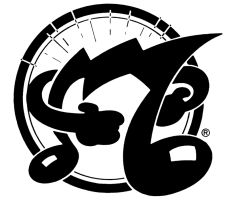 Yes. That probably started ten years ago...I was still at Line 6, and it was kind of just a personal side project. Gibson owned the Oberheim trademark but really hadn't been using it. I inquired, and they weren't interested in letting go of the name. But then Gibson filed for bankruptcy and I thought I should try again. So, in January 2020, I introduced myself to JC Curleigh, the new CEO of Gibson. I said, "You're new to the industry. You don't know me and you may not know Oberheim, but I need to tell you a story and there's something I want to ask of you." And he was amazing. He listened and, on the spot, said, "Yea, we need to figure this out." And by the summer of 2020, we were able to announce that Gibson had given the Oberheim name back to Tom.
Yes. That probably started ten years ago...I was still at Line 6, and it was kind of just a personal side project. Gibson owned the Oberheim trademark but really hadn't been using it. I inquired, and they weren't interested in letting go of the name. But then Gibson filed for bankruptcy and I thought I should try again. So, in January 2020, I introduced myself to JC Curleigh, the new CEO of Gibson. I said, "You're new to the industry. You don't know me and you may not know Oberheim, but I need to tell you a story and there's something I want to ask of you." And he was amazing. He listened and, on the spot, said, "Yea, we need to figure this out." And by the summer of 2020, we were able to announce that Gibson had given the Oberheim name back to Tom.
But the story doesn't stop there. Because Gibson had let the name lapse, Behringer had started registering the Oberheim mark in a number of countries, so we didn't yet have the Oberheim name worldwide. That took another year of negotiation. In the end, Behringer also gave all of the trademarks back to Tom and by that time we had started the OB-X8 development. Some clever people did notice that Sequential had filed for the trademark "OB-X", which we had considered for the product name, but at the time we didn't know we'd be able to make it a real "Oberheim". But once we secured the rest of the trademarks we had a discussion with Focusrite about how Sequential could really be the right home for managing the Oberheim brand.
Tom is 86 and that's not usually the time you start a new company, and I wasn't interested in starting a new company, and Sequential already had a great team and the infrastructure and could build synths and sell them and service them, and had done that very successfully with the OB-6, so let's set up an exclusive arrangement where we help design the product and use their infrastructure, so to speak, to bring it to life.
So, the OB-X8 design team was you with your historical perspective and all of your HP64000 files, hardware and software engineers from Sequential, and Tom himself as an overseer?
It was crucial that Tom, as part of the design review process, could see that we've authentically followed the original designs back to the SEM, so he was involved in all of the schematic reviews and listening to prototypes and making sure that it was all correct. We were very lucky that there is a very capable team at Sequential that really did the heavy lifting, and Dave himself was a huge part of writing some of the code and being involved in the circuitry. Tony Karavidas was the main hardware designer and he's been with Sequential a long time, and also is very familiar with the Oberheim world. As to my role, I was probably the deepest into the Oberheim saga and ethos and very familiar with what makes an Oberheim an Oberheim.
So, we had the team, including Dave Smith, and they of course know what makes a Sequential inside and out, but for them some of the things that were just the Oberheim way was like being in an alternate universe. And it's not a question of right or wrong, it's just different. There's the obvious differences in sound, there's differences in the approach to how the synth works, to levers versus wheels, and any number of things. Tom and I really appreciated that Dave and his team were willing to listen to me and what sometimes probably seemed like really crazy notions about how the synth should work. I just really wanted to take it all the way or it didn't make sense to do it.
It was a great decision. The OB-X8 is fantastic.
Thank you. It really does make me smile. It's got everything that I ever wanted, and now I know I could take an Oberheim wherever and play and have all of those sounds and not have to worry about these old guys over here [Marcus' vintage Oberheim collection] and wonder whether or not they'll work each time I turn them on.
If you look back over the 40-plus years you've known Tom Oberheim, what are the most important things you think you've learned from him?
Tom Oberheim
That's a good question. I'd say a few things. First of all, I give Tom a lot of credit for letting a couple of young guys, Michel Doidic and myself, lead the Xpander project. In terms of conceptualizing a product like that, Tom trusted us. It may not have been the synthesizer he would have designed, but he let us go wild. We worked very closely with Doug Curtis on designing some new chips for the product. Back then to put 120 characters of vacuum florescent display in a multi-colored overlay and all of these kinds of concepts, it was pretty out there. He wasn't a command-and-control manager—which I think was very advanced for that day and that was helpful for me because what I aspire to do in leadership and leading teams, is to not be command-and-control.
Another thing is, I used to have a saying that I used a lot when I was young which is, "everyone says you learn from your mistakes, but I'd much rather learn from other people's mistakes. It can be a lot cheaper." So, certainly having witnessed the financial trouble that Oberheim had gotten into, how easy it is for a small, private company to find themselves undercapitalized, to overextend themselves in inventory, and even when the company business seems to be doing well—you know, a lot of time companies go out of business and the customer wonders how did that happen—that was an important lesson, and in fact lead us to the next ten years, we created a business that, by design, never had to have any inventory. We were designing products for other companies. Let the inventory aspect become their problem; we just wanted to design the products. And that worked very successfully for us, so that was another good lesson.
I guess the last thing I would say, he's a wonderful example of resilience. Here he is, at 86 years old, he had a period of time where he wasn't involved in synthesizers at all and might've thought he would never have the chance again. He picked himself back up with a lot of encouragement from Roger Linn and others, he brought back the SEM and went on this journey that's led all the way until now and having a real Oberheim polyphonic synthesizer again, which is something I honestly didn't imagine would happen again. It's really just been wonderful to come full circle like that. That's why I said, I owe him a lot. He decided he saw something in this 19-year-old that was worth taking a shot at. I've hired a number of very young people, some right out of school and some that didn't even go to college, that I'm quite proud of that were just brilliant and did amazing things for Fast Forward Designs and Line 6, so I'm real proud of that too.
Two more questions, what is your desert island synth, not designed by you?
synth museum like this!
Hmm...desert island synth...alright, I guess I have to pick something I don't own, or something that I don't own a piece of. I suppose this might change day to day, but right now, thinking of what I would have fun with, I think I might take...it might be a toss-up between the ARP 2500 or a Roland System 700. The System 700 was the giant Roland modular. So, this guy here [points to one of his synths], that's a Roland System 700 Lab. That's like one wing cabinet, but if you imagine two wing cabinets and then a large middle cabinet, and then three cabinets on top of that with the big sequencer and the keyboard. It was a very large format modular synth. It has a great sound. I have a piece of it, and I really enjoy how it sounds, so I would probably take one of those two. It would be really impractical to have either of those on a desert island because it probably wouldn't work very long.
And the last question, where do you think the musical products industry is headed at this point?
I'll answer it a little sideways. It's a question that I've been asked a lot over the last 40 years that I've been doing this. And there's a parallel, I think, anytime I've ever been asked, you could easily imagine the tools we had at that time, you kind of feel like we have everything we need. We've got a wealth of technology and capabilities and so on. And yet, with each decade came more and more innovations, so I'm one of those believers that innovation doesn't stop. I can't say I know what it is that would be coming next, but I have no doubt that there's still plenty ahead in hardware and in software and in all of the things that inspire creativity.
As far as Marcus is concerned I applied a rule that I had learned in my 11 years in the early days of the computer industry: pick associates very carefully and then turn them loose.
Tom Oberheim - Electronic music product pioneer
See Oberheim emulations in the KVR Marketplace...

Find Oberheim - The Bundle, Oberheim OB-E, Oberheim SEM and Obsession in the KVR Marketplace

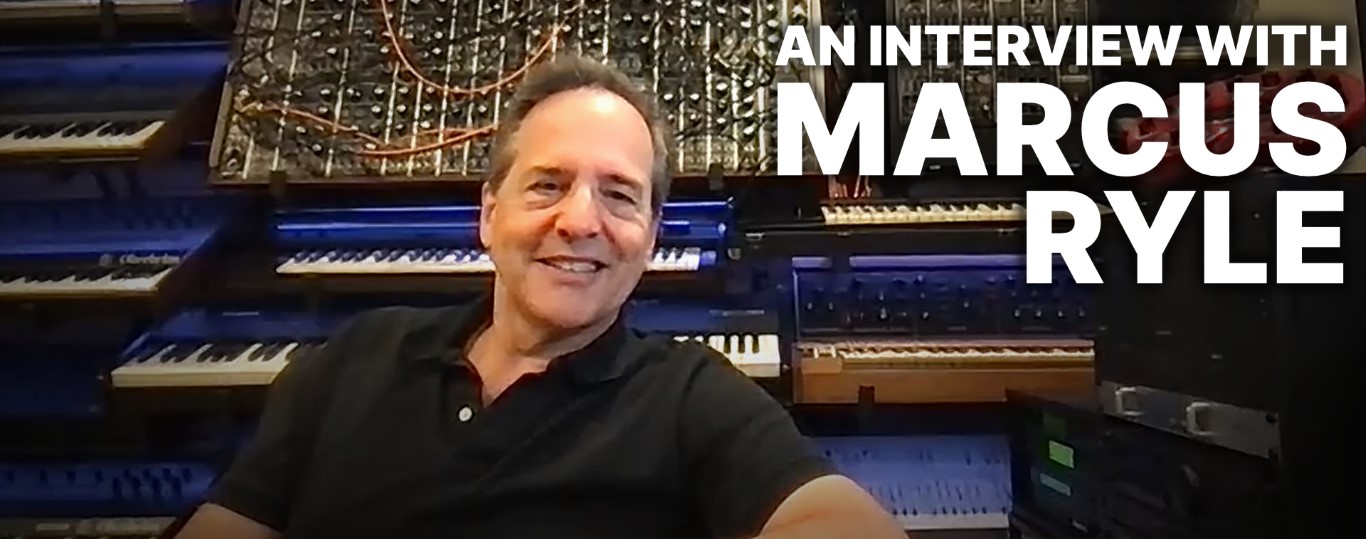
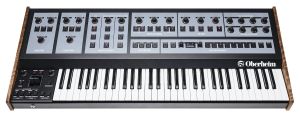
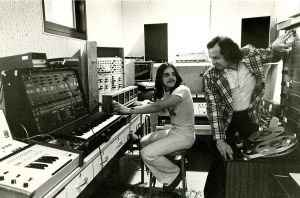
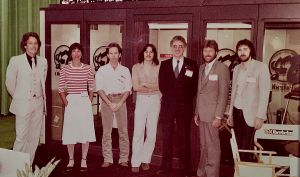
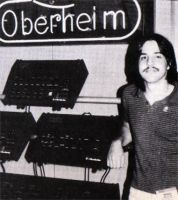
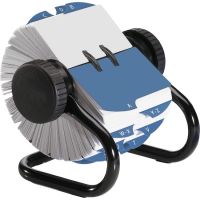
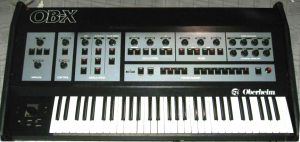
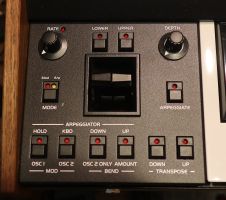
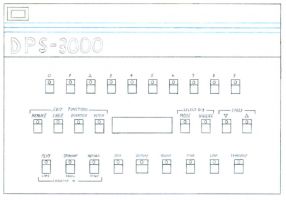
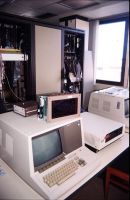

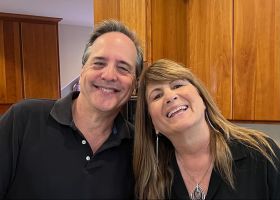
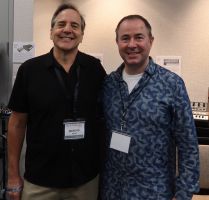
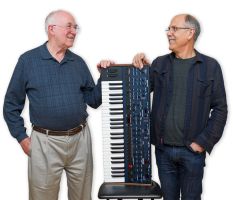
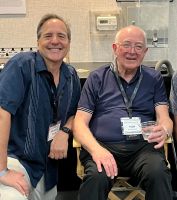
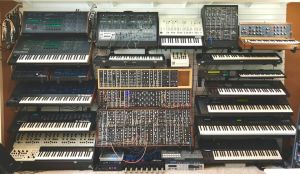

 Other Related News
Other Related News

